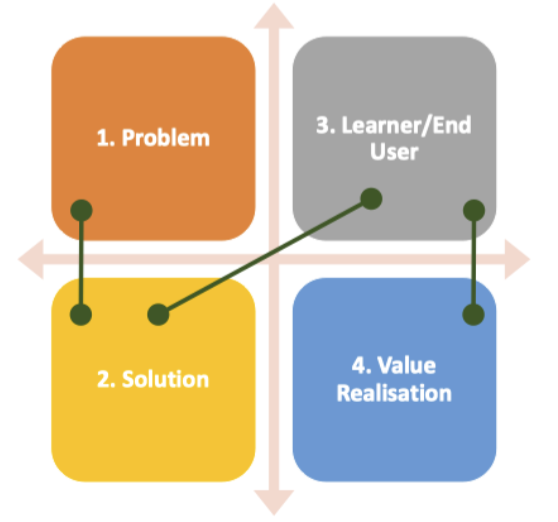Higher education has been growing fast.
Over the period 2013/14 to 2022/23, providers across the UK increased student enrolment by 18 per cent, from 2,488,835 to 2,937,155 (HESA, 2015;2024).
Over the period, full-time equivalent academic staffing, including atypical staff, increased by 19 per cent from 163,095 to 194,130.
Corresponding figures for professional service and support staff are unavailable because many institutions do not return these figures.
But there is evidence that there was considerable growth in this category of staffing and considerable variability in the relative proportions of staff engaged in this activity, from 0.8 members of non-academic staff to nearly twice that figure in others.
Clearly, there are variations in institutional mission, and it might be expected that those with a significant focus on franchise and research activities might have larger numbers of staff employed in non-academic support roles.
But are the absolute and relative proportions appropriate in all cases? And crucially, do they effectively support the institution’s value proposition in every institution?
And despite the well-documented systemic disruptions facing the sector, there is evidence that universities appear to be solving only part of a much broader problem.
Budget deficits tend to be a symptom of a much broader problem, which may be strategic, tactical, and cultural. At its heart, budgets are necessary for control purposes, but investment decisions for university transformation projects should incorporate value-driven decision-making, not solely from short-term budgetary fixes.
Addressing the underlying systemic problems is paramount, and a value proposition approach could enhance university resilience.
A what now?
A VP can be depicted in a two-by-two matrix and involves thinking about the 1) problem, 2) solution, 3) learner and end-user, and 4) value realisation.
Hypotheses can be generated to connect the four boxes about potential value. This will be an iterative process where hypotheses around strategy ideas are tested, proven, discarded or re-formed as fresh data and information obtained.
Crucially, the matrix processes should be based on horizontal and vertical conversations and workshops during the discovery phase, which are used to map connections between the boxes.

Broad engagement will help identify a clear and robust roadmap that builds on the institution’s distinctive offer.
When unpacking the VP, the five points are pertinent:
- The problem exists and matters to a learner and end-user (they care about it; it is significant to them).
- The problem (through the strategy process) has identified potential solution(s).
- The learner (and end-user) accepts that the proposed solution works or applies to them.
- The learner and end-use can see the potential for realising value through applying the solution.
- The solution may exist in differing forms -technology, technique, tool, product or service, which can be applied, and results can be easily measured and monitored.
Leveraging the VP effectively requires a systematic approach that considers past, present, and future uncertainties carefully. This structured process is essential for understanding the VP’s full potential and its application in the context of higher education institutions.
How it might work
Let’s assume that a Business School wishes to address its falling postgraduate learner numbers.
The process will involve four stages:
- Foundation stage – The workshop group are introduced to the VP philosophy, and insights are shared in a social learning context. The process involves participants looking at market analysis, historical trends, and projections.Moving forward in a relational rather than transactional approach will help identify issues. These core issues can be expressed in a hypothesis format. One hypothesis, which may occur is that the Business School is not articulating a distinctive offer in terms of its graduates being fit to work in this AI-driven age.
- Solutions – Pain and gain points are obtained from a survey of alumni and stakeholders. These are used to construct some possible solutions. Let’s consider AI.More specifically, with management consulting firms rapidly growing their generative AI services, a solution may involve : how can we supply a pipeline of future-ready AI consultants? Discussions conclude that the Business School must adapt their curriculum to better meet industry requirements.
- Learner and end-user – From experience this step is usually the missing step. The Business School needs to specifically connect the problem to the learner and end-user context.Then the salient business student personas for the appropriate programme, need articulating. A deep dive is required for each persona, and connections need to be made with 1) and 2) above. This is the crux of the VP approach.
- Value realisation – In the latter case, removing pain points and delivering new gains, will create potential solutions aligned with the learners and end-users, which will make a difference in the form of increases to postgraduate programmes.
The VP approach, when implemented, can fast-track universities to provide a solid basis for differentiating themselves in the crowded market.
Adopting a VP approach can help universities redesign the problem definition stage, which can help identify innovative strategic solutions rather than solely productivity-based ones. The latter is critical to driving efficiency-based solutions, but recurring problems must be addressed. Universities that align their investment financial expenditure with their VP will better serve their stakeholders.
Without one, the discourse refrains from asking tough questions and making bold decisions. Universities need to shift perspectives to consider their VP to ensure that strategies result from rigorous and robust analysis.
Incorporating a VP approach can also include addressing economic, social, and environmental issues. The resultant strategy process can enable universities to generate momentum to restructure specific challenges better and articulate the unique benefits they offer to learners, staff, and stakeholders.













